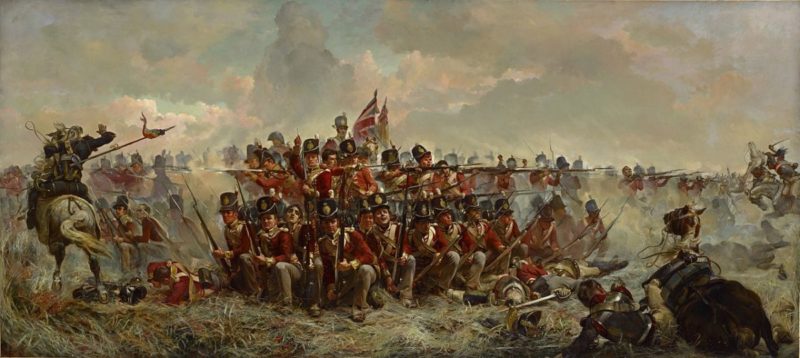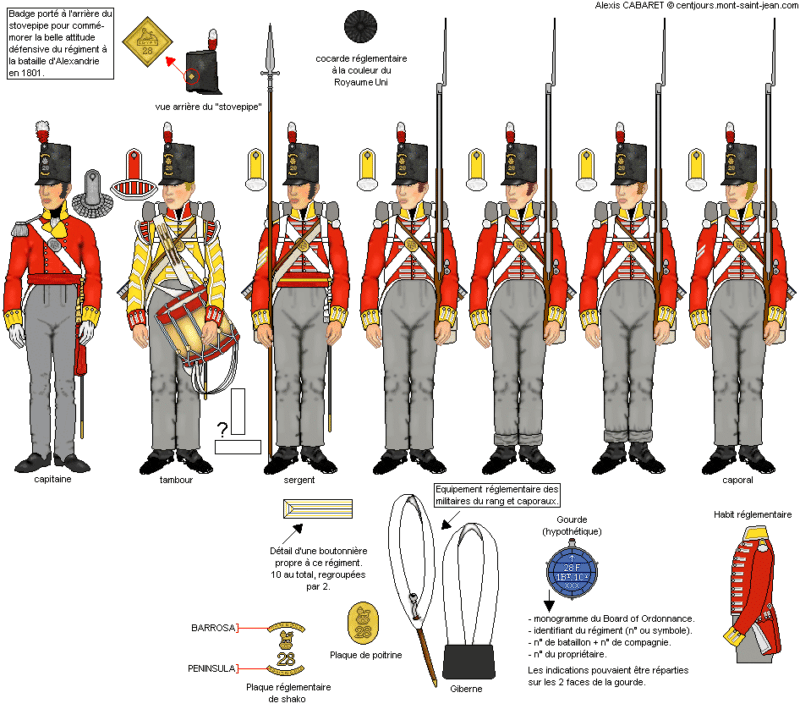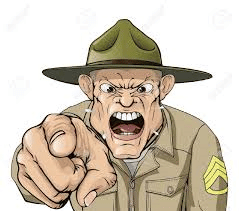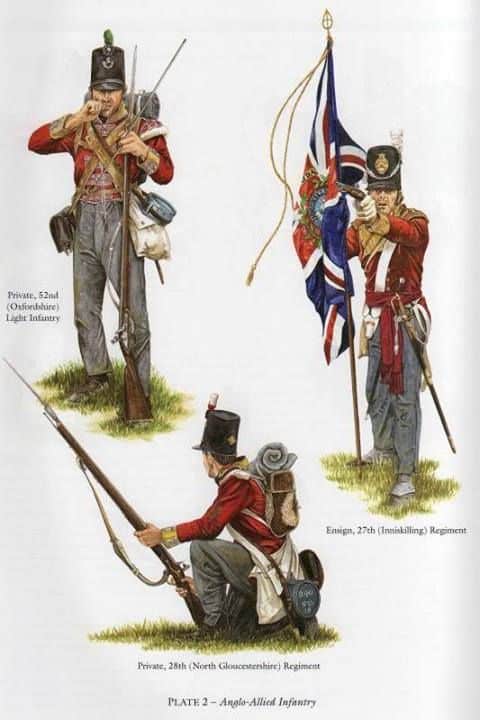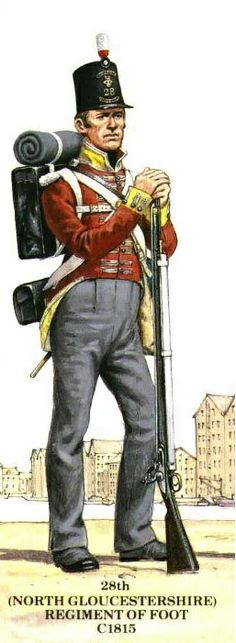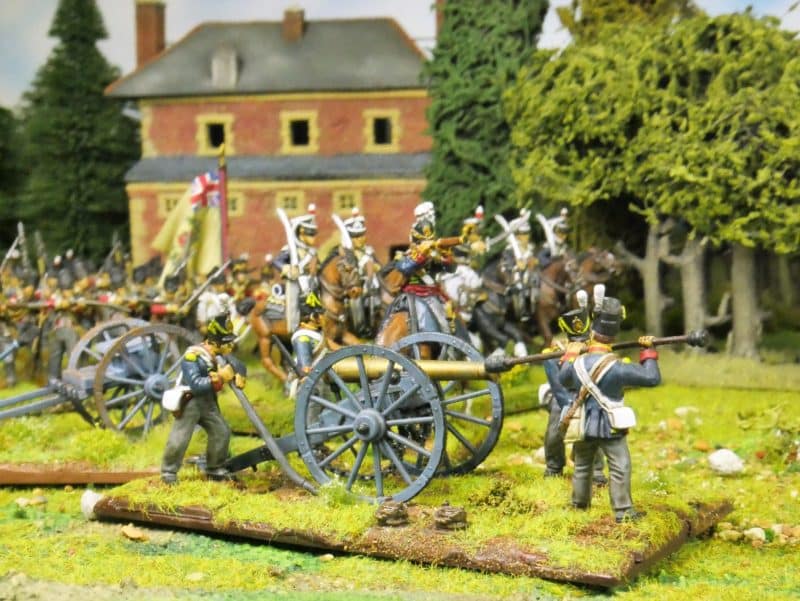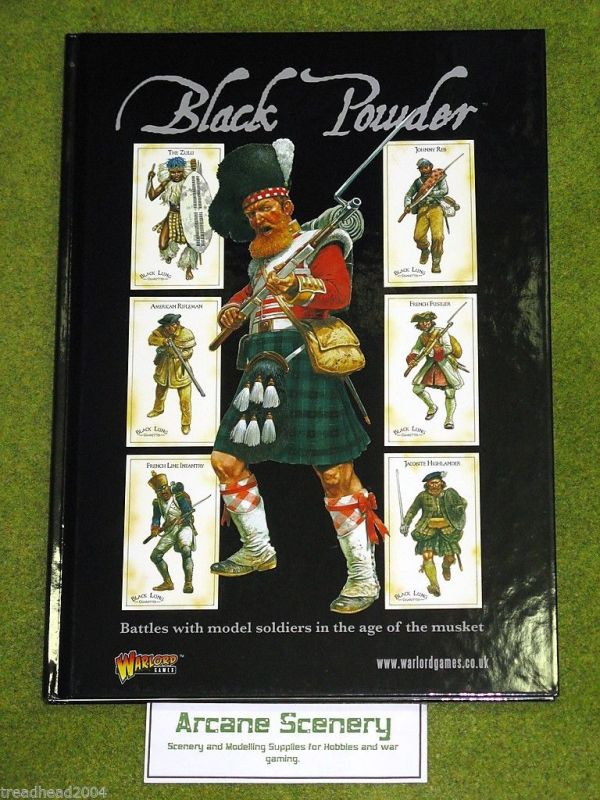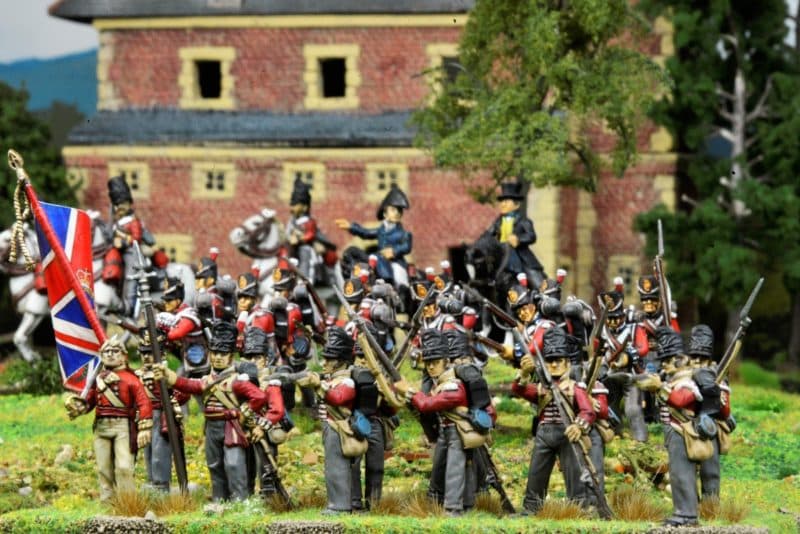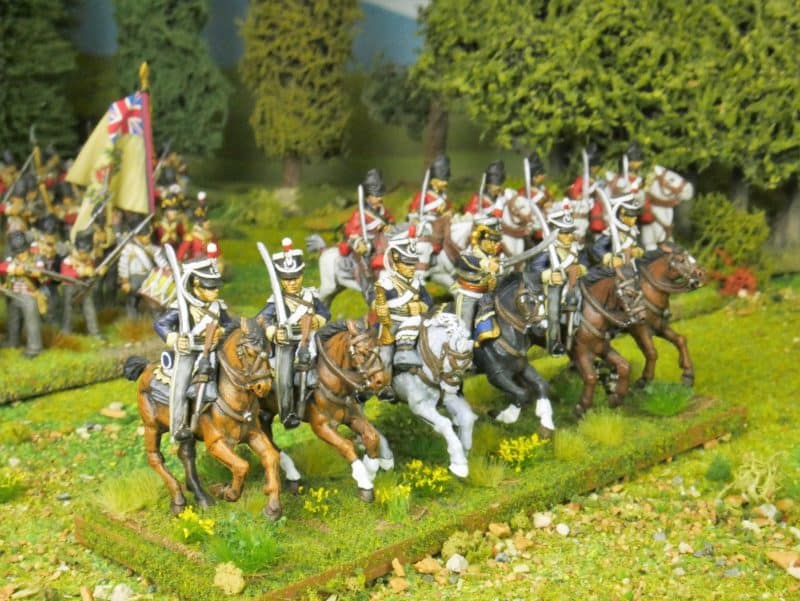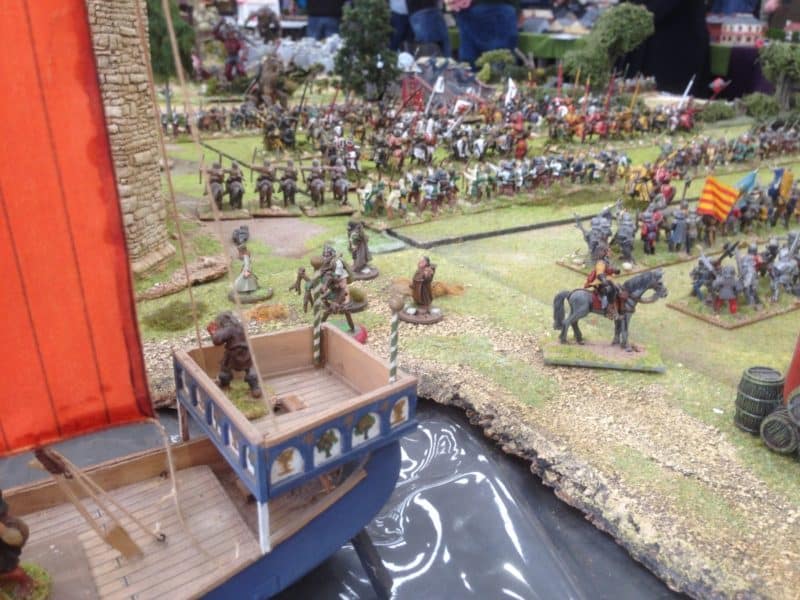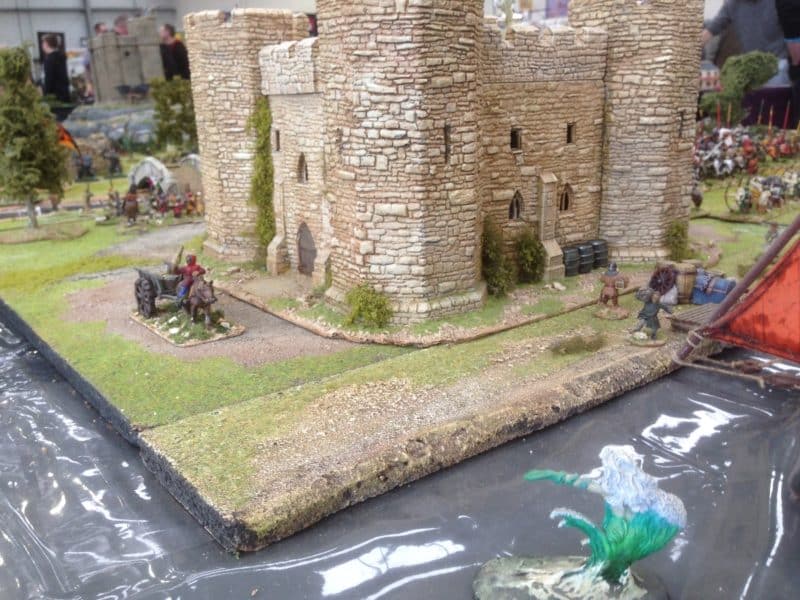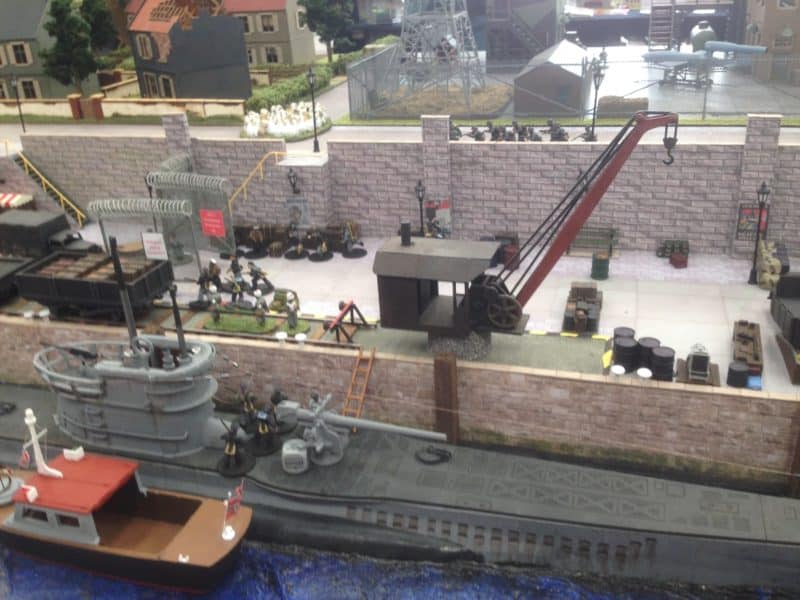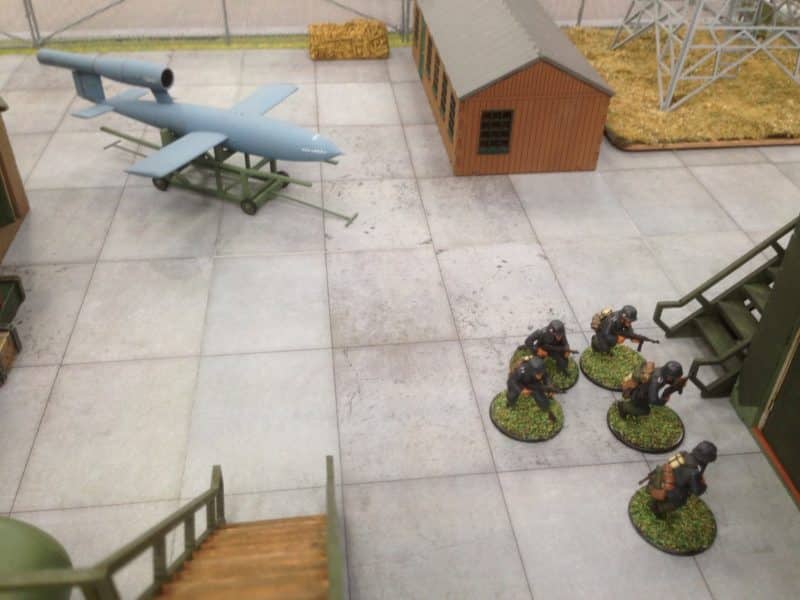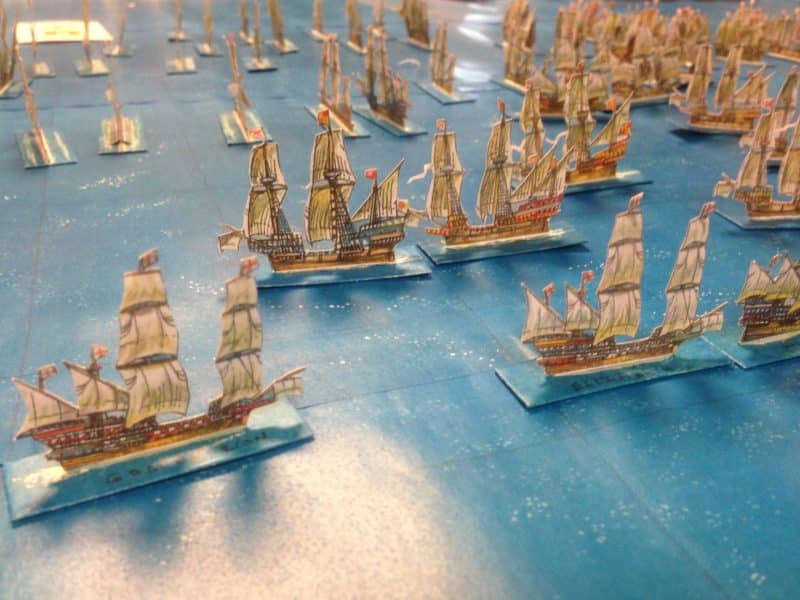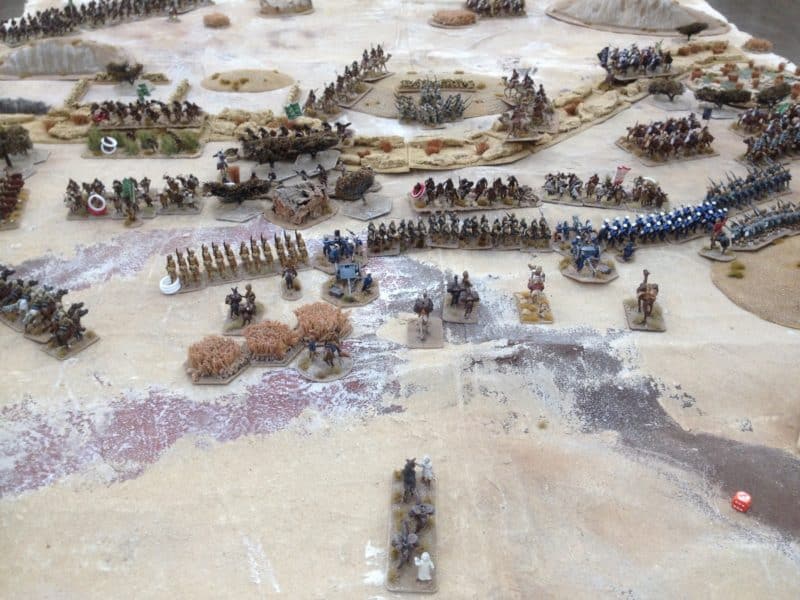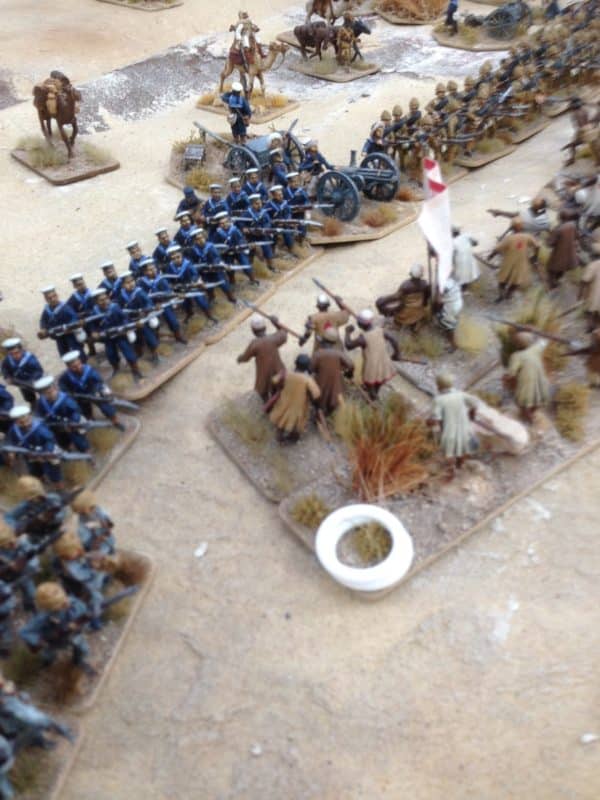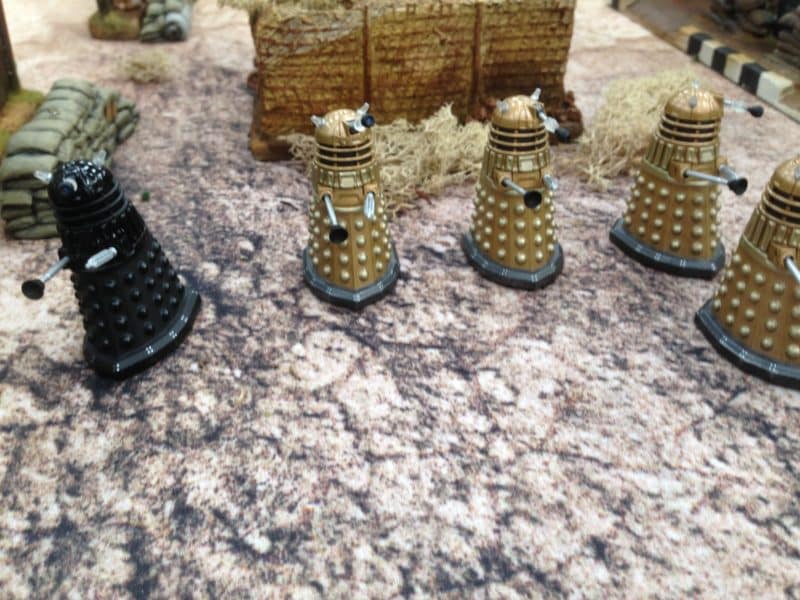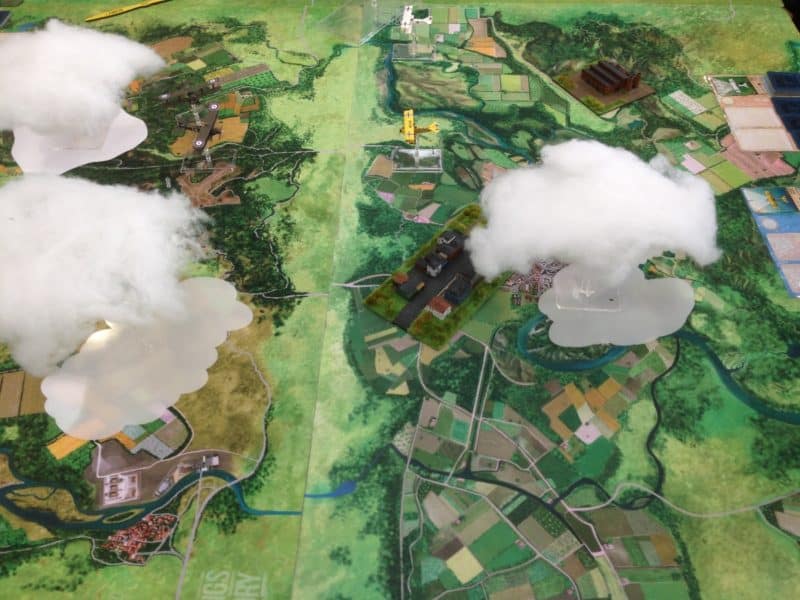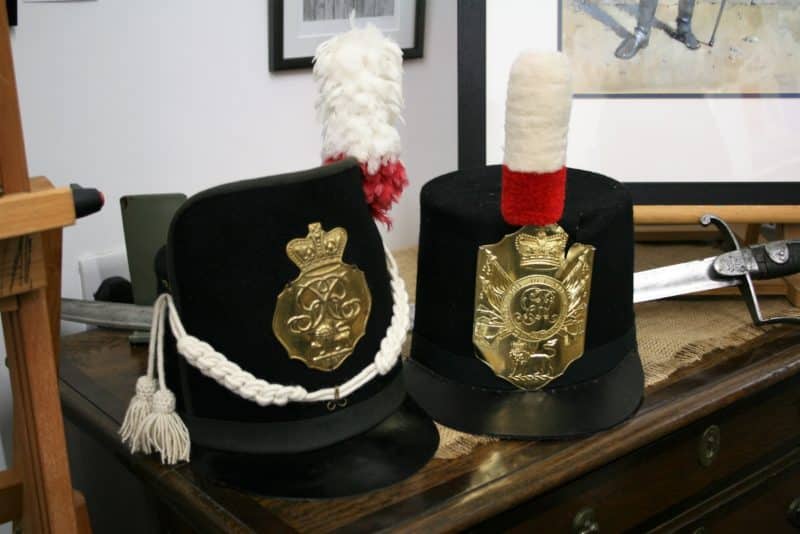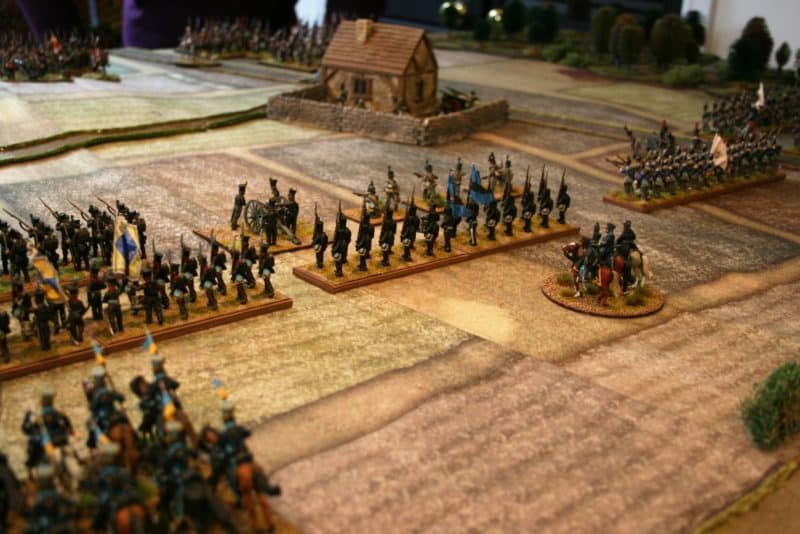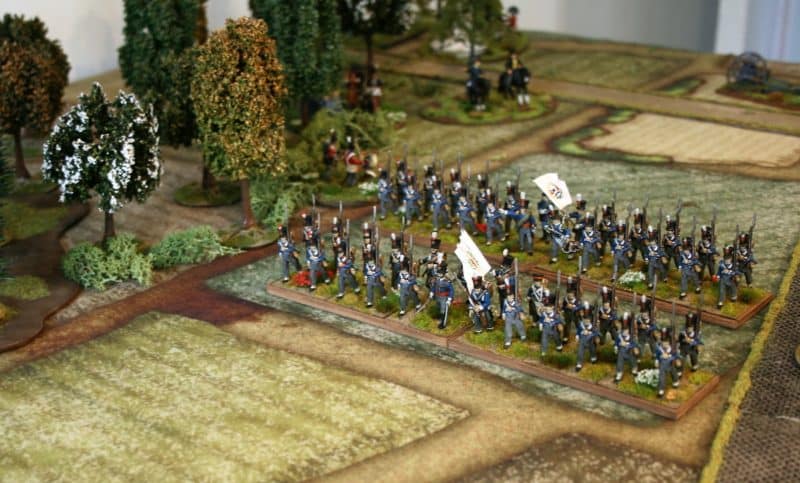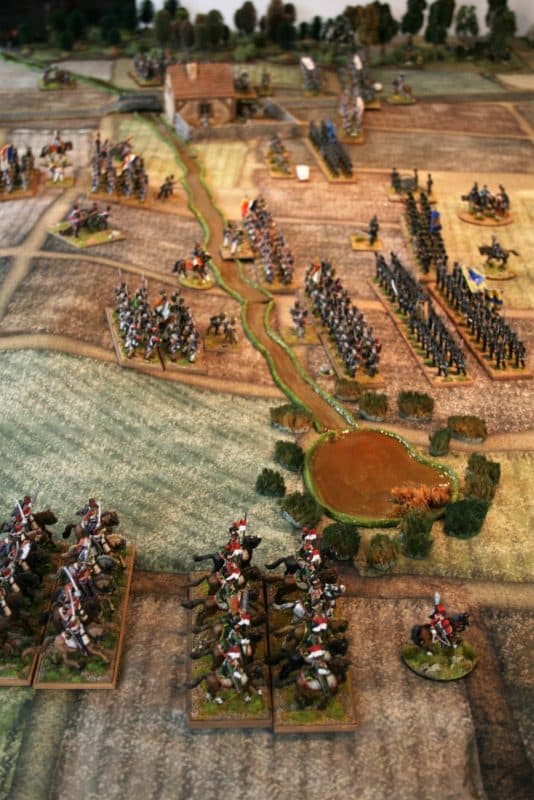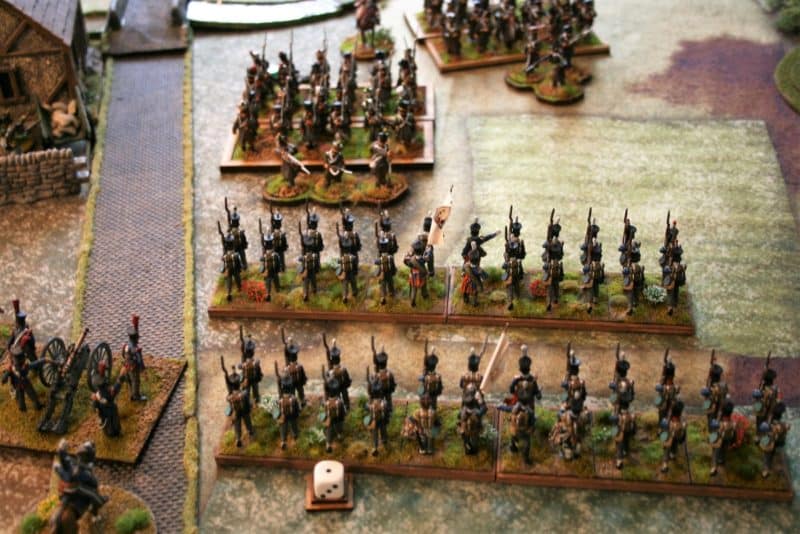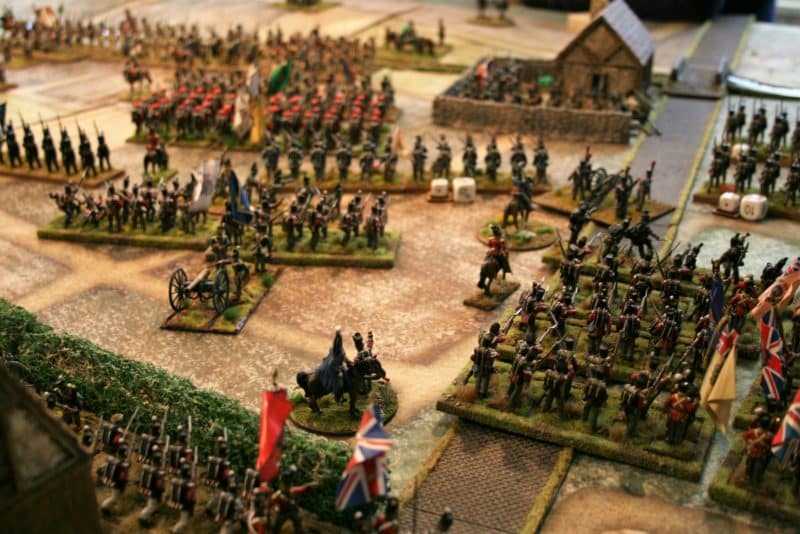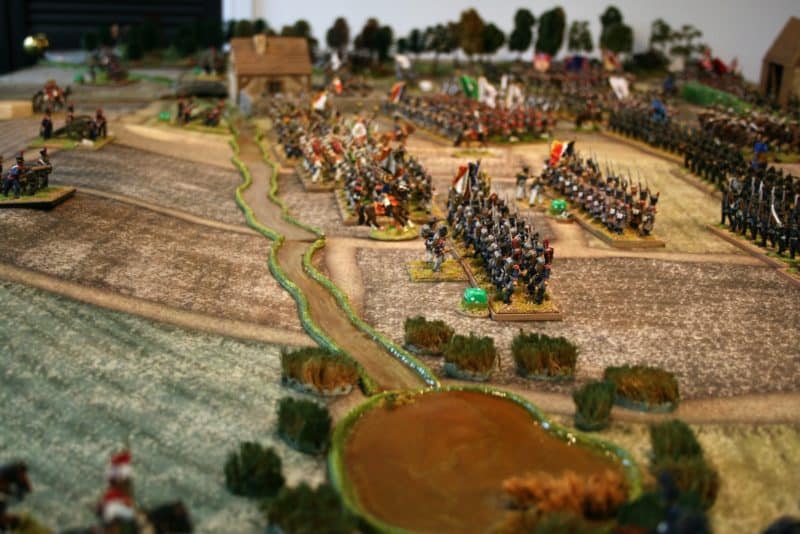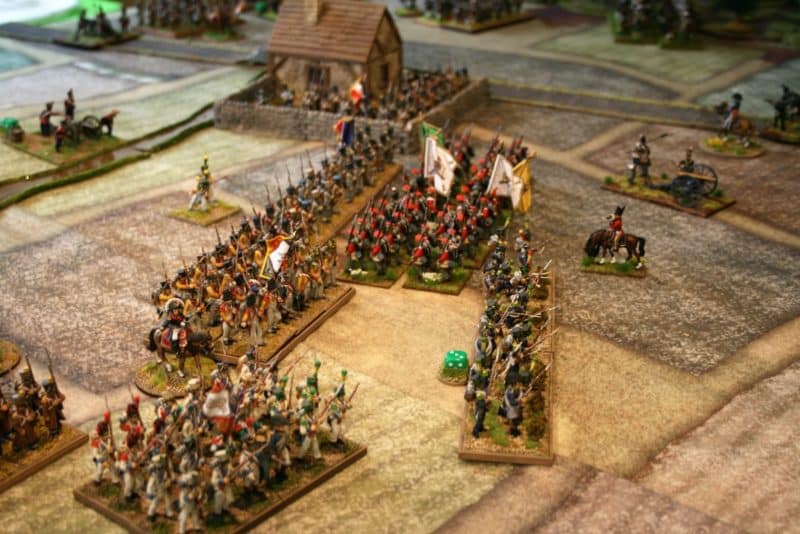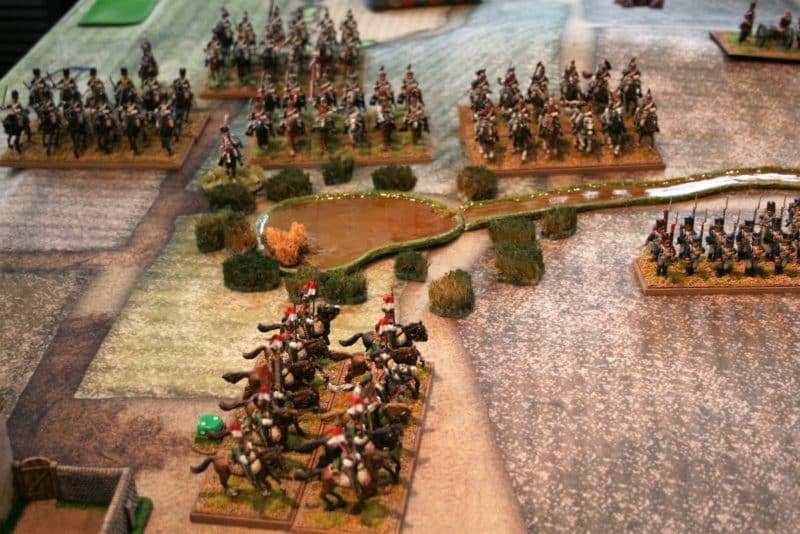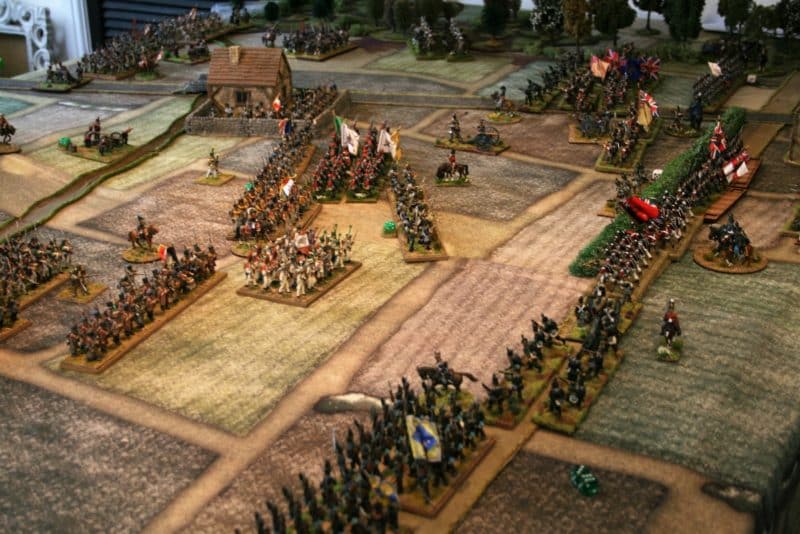 With the last two blogs explaining the rules choice and the research that I had done, it was time to start work on the unit itself. The figures that I had ready to paint were Warlord Games British Peninsular Infantry. As you can see, they have the stove pipe shakos that the 28th continued to wear at Waterloo. The only slight problem being that the shako plate on the front is incorrect for the 28th. I had two choices, either sand the incorrect plate off and replace it with the correct style plate or ignore the minor difference. I chose the latter. Even as I type this, my OCD reflex is twitching, but to replace all the shako plates was too much work for this project. I would either have to paint on the correct style three piece plate, model it with, say, green stuff, or track down a decal set of some sort. There may even be replacement heads available out there. On this occasion, the simple, albeit incorrect solution won the argument.
With the last two blogs explaining the rules choice and the research that I had done, it was time to start work on the unit itself. The figures that I had ready to paint were Warlord Games British Peninsular Infantry. As you can see, they have the stove pipe shakos that the 28th continued to wear at Waterloo. The only slight problem being that the shako plate on the front is incorrect for the 28th. I had two choices, either sand the incorrect plate off and replace it with the correct style plate or ignore the minor difference. I chose the latter. Even as I type this, my OCD reflex is twitching, but to replace all the shako plates was too much work for this project. I would either have to paint on the correct style three piece plate, model it with, say, green stuff, or track down a decal set of some sort. There may even be replacement heads available out there. On this occasion, the simple, albeit incorrect solution won the argument.
When it came to the additional rear shako plate, it was a fairly straight forward job to make these diamond shaped plates by cutting an evergreen strip of 10/000 plasticard into diamonds by simply cutting the strip into small pieces at an angle. With hindsight, I have made these too large and should have used a thinner strip. Once again, my OCD reflex is twitching and I am considering cutting these off and replacing them, even though I have nearly finished painting them! At the moment, I have decided to leave them as they are but it wasn’t until I checked the photos that I realised how big they were. Now, I wanted to be able to see the badges when the figures were on the table and making them oversize would help to show the difference in regiments but maybe I have gone too far….
I could have simply painted the plates on but modelling them gave a crisper edge to the plates than I could have achieved by painting.
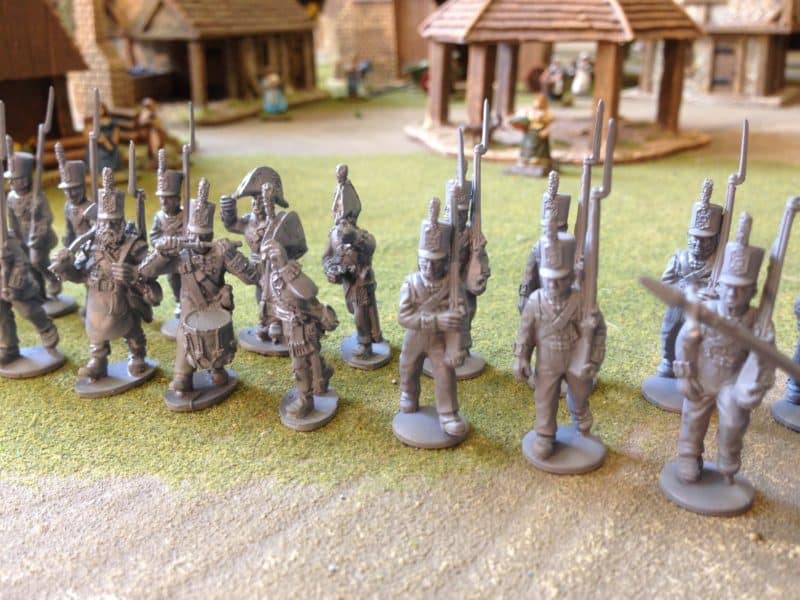
28th Assembled and primed
The picture above shows the unit assembled and primed ready for painting. At this stage, I had also modelled the ensigns with Peninsular style Bicorn. However, after some thought, I did revisit the figures and I have now changed these to Stovepipe heads to match the Mont St Jean reference picture. The officer kept his Bicorn – a bit more artistic licence but officers did tend to make their own choices when it came to uniforms. As far as numbers go, I have made the unit 24 figures strong, the standard number for a Black Powder unit. The unit that I am making is a representation of the 28th, not an accurate ‘scaled down’ man to man depiction. As far as the research goes, there were 557 men in the 28th at Waterloo, a somewhat reduced battalion due to the casualties lost fighting at Quatre Bras on the 16th June. Compare this to the 862 men present in the 1/40th and you can see why it becomes impractical in wargaming to start fussing about the numbers. The battalions fought as units, regardless of numbers.
I will use two figures only for the light company on one flank and another two for the Grenadiers in the other flank company. I occasionally use 28 figures for a battalion. 24 for the main body of troops, upgrading the Grenadier company to 3 or 4 figures and a further 4 ‘detached’ figures from the light company are then used as skirmishers out in front of the battalion. So, although 24 figures are currently on the workbench, don’t be surprised if a further 4 appear in the course of these blog articles!
The figures were all assembled using polystyrene glue for the plastics. Polystyrene glue gives a much better bond when gluing plastic to plastic. I only use super glue on the metal officers and command figures – usually the thick expo super glue which has a bit of ‘fill’ to it and again, will give a better bond. I left the back packs off to make painting easier. It also means that I can prime the figures in grey and the back packs in black to save a bit of time when painting. With a grey primer, I wont bother to paint the trousers, just retouch any overruns. I also find it easier to paint over grey than, say, black.
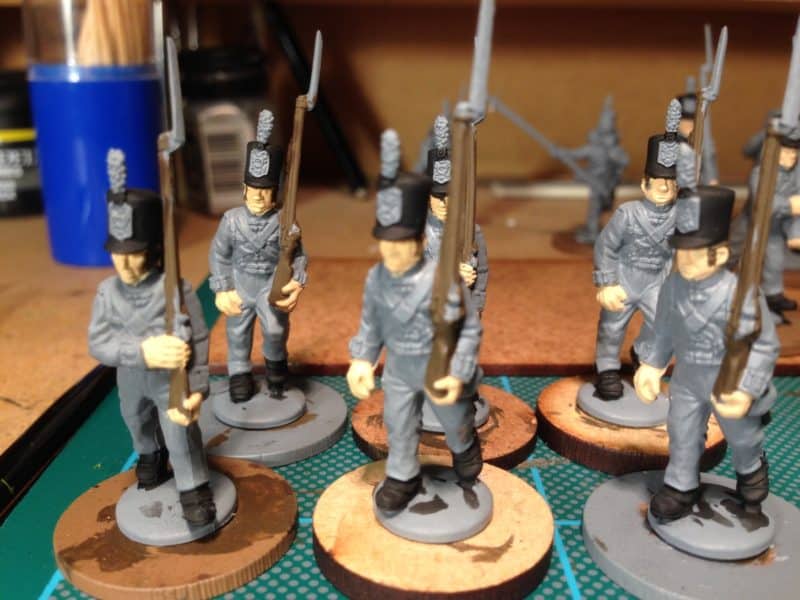
First batch primed and first colours applied
After a quick clean up to remove any obvious flash missed during assembly, I fix the figures to temporary MDF painting bases using blutack and start applying the paint. I use Vallejo paint almost exclusively to paint my models. Vallejo have a huge range of colours, the quality is generally excellent and value for money is about the best you can get. When it comes to the sequence of painting I tend to work from the ‘inside’ of the figure to the ‘outside’. This means that you can save a bit of time – as you paint the figure, you can tidy up any overruns as you go.
I should also declare at this stage that I will be using Army Painter quick shade to finish the figures. So all that I need to do, is to carefully block paint the correct colours. I know that this is not to everyone’s taste and I will cover the use of ‘Quick shade’ and it’s merits in next weeks entry. So the figures above were first painted with Vallejo 70815 flat flesh for the face and hands. Next up, 70950 flat Black, for the shakos, boots and bayonet scabbards and finally, 70872 Chocolate brown for the muskets and Hair. If you are feeling so inclined, you can of course vary the hair colour! However, I tend to paint the lower ranks all the same and just vary the hair colour when it comes to the Officers, Ensigns & drummers for a bit of a change. Until I get a sponsorship deal from L’Oréal, I don’t think that I will worry too much about it….
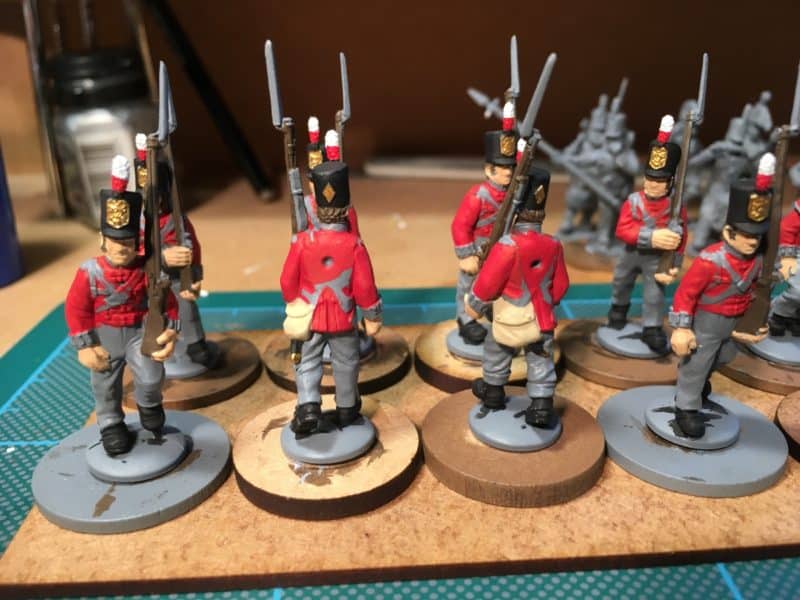
On with the next colours…those rear plates do look big…
The final picture shows the next step in the batch paint process but I’ll pause there and come back next week to explain what colours I have used and the sequence. I’ll also give my thoughts on why the batch painting process works for me – it might help newcomers to Napoleonics start to climb that painting mountain!
If you would like to purchase any of the products used in this article, they are available from my shop and the links are as follows:
Warlord Games Peninsular Infantry
STOP PRESS!
We are running a special offer until the end of April2017. Buy a copy of Black powder and get a free box of Peninsular British Line Infantry just click here:


